Some goats look like they walked straight out of a fantasy movie. Long silky coats, wild eyes, ears that droop like curtains—or stick out like satellite dishes. From tiny, bouncy breeds that love cuddles to majestic horned goats that belong on a postcard, these aren’t your average farm animals. Some of them can even rival dogs when it comes to being great with kids. Whether you’re into backyard farming, curious about goat yoga stars, or just love weird animals with personality, this list has it all. Fluffy, spotted, miniature, or mysterious—they’re as strange as they are lovable. And yes, a few of these quirky goats would happily follow your toddler around the yard.
Angora Goat
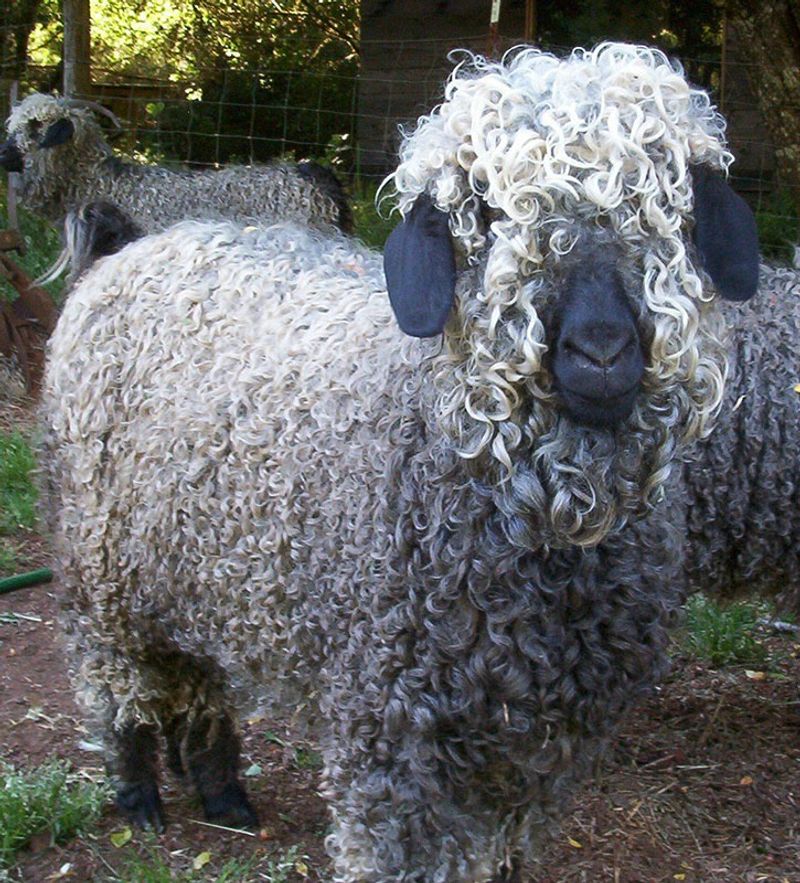
Angora goats, known for their luxurious mohair, are a sight to behold. Their fleece, often used in high-end textiles, is what makes them truly distinctive. These goats don’t just offer softness but also a robust character, thriving in various climates.
With their gentle demeanor, they easily win hearts. Angoras are not just about looks; they are versatile and adaptable. Historically, they have been treasured for centuries, originating from Ankara, Turkey.
Did you know? Their fleece grows about an inch per month, making them quite the wooly wonders!
Nigerian Dwarf Goat
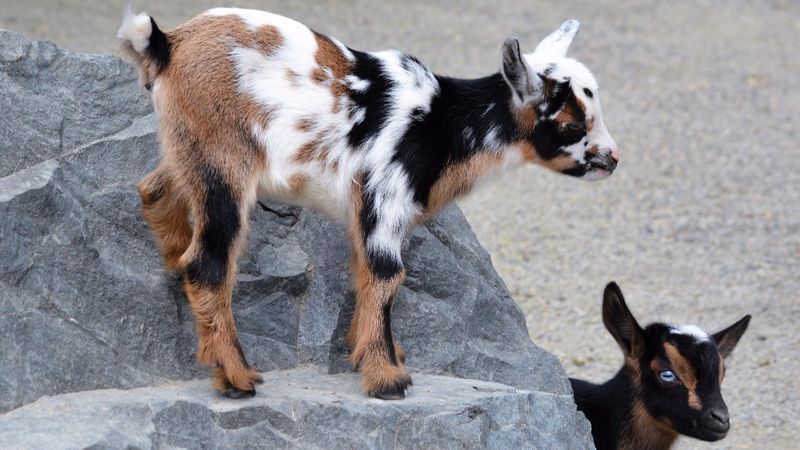
Nigerian Dwarf goats charm with their small size and playful nature. Originally from West Africa, these goats have found popularity worldwide. Their vibrant coats come in endless patterns, each goat a unique masterpiece.
They’re not just cute; their milk, rich and creamy, is sought after by dairy enthusiasts. With a friendly disposition, they are excellent companions for families, including children.
Interestingly, these goats can produce up to two quarts of milk a day, making them tiny powerhouses in production.
LaMancha Goat
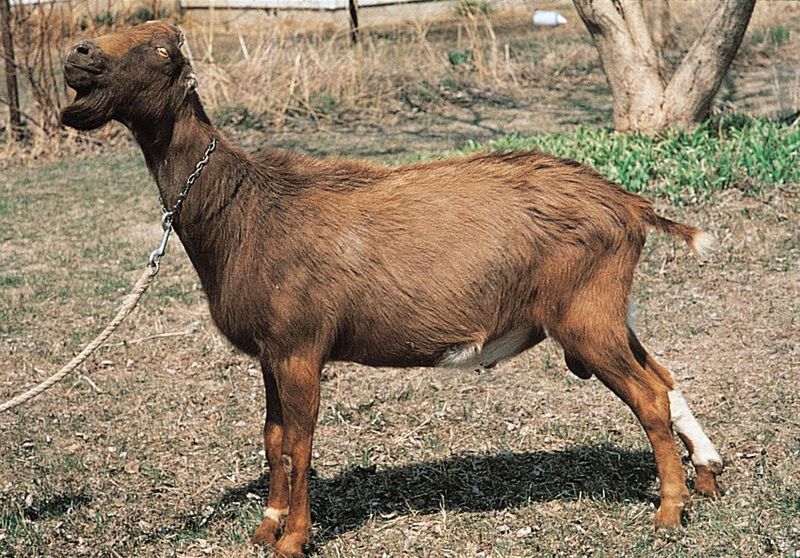
LaMancha goats are instantly recognizable by their tiny ears, a unique feature among goats. Originating in the United States, they are celebrated for their excellent milk production.
Beyond their ears, they are known for their calm and friendly nature, making them an endearing choice for goat lovers. Their adaptability to various environments adds to their appeal.
Did you know? Despite their ear size, LaManchas have excellent hearing, proving that appearances can be deceiving.
Boer Goat
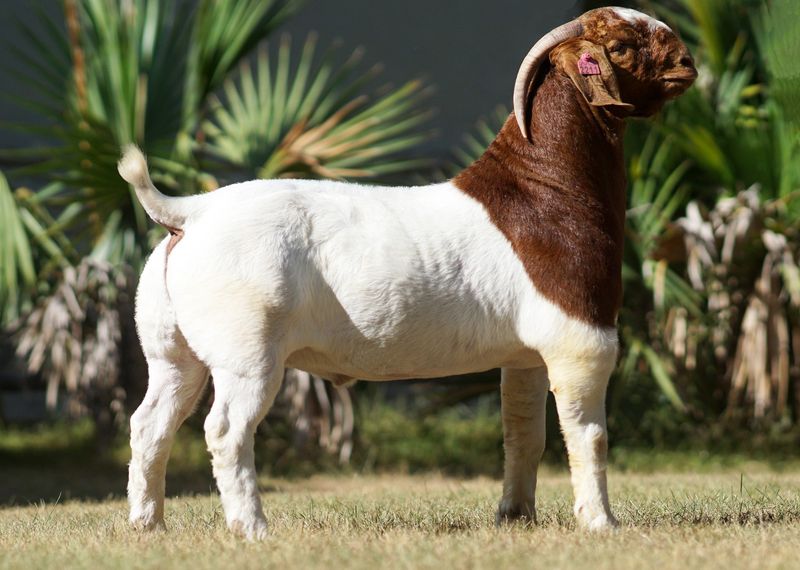
Boer goats, with their muscular build, hail from South Africa and are renowned for meat production. Their distinctive white bodies and reddish-brown heads set them apart visually.
Known for their hardy nature, they thrive in diverse environments. Their rapid growth rate and size make them a favorite among farmers. Despite their stocky appearance, they possess a surprisingly gentle disposition.
Fun fact: Boer goats can gain weight at an astounding rate, making them one of the fastest-growing goat breeds in the world.
Pygmy Goat

Pygmy goats are miniature marvels known for their outgoing personalities and adorable looks. These goats, originally from Africa, are now popular pets worldwide.
Their small stature doesn’t hinder their zest for life. They love to climb, play, and interact with humans, making them delightful companions. Their coats, often a mix of colors, add to their charm.
Did you know? Pygmy goats have a unique ability to adapt to various climates, making them suitable for diverse habitats.
Alpine Goat

Alpine goats, with their elegant stature and vibrant coat patterns, hail from the French Alps. Renowned for their dairy production, they are a staple in many farming communities.
These goats are not just prolific milk producers; their inquisitive and lively nature makes them a joy to raise. Their adaptability to mountainous terrains showcases their resilience.
Fun fact: Alpine goats can produce up to a gallon of milk per day, making them one of the top dairy breeds.
Saanen Goat

Saanen goats, often referred to as the Holsteins of the goat world, are renowned for their high milk yield. Originating from Switzerland, they have a calm and gentle nature.
Their all-white coats give them a regal appearance, and their productivity is unmatched in the dairy sector. They are often the top choice for commercial dairy farming.
Did you know? Saanens are prolific milkers, with some producing over three gallons of milk a day!
Kiko Goat
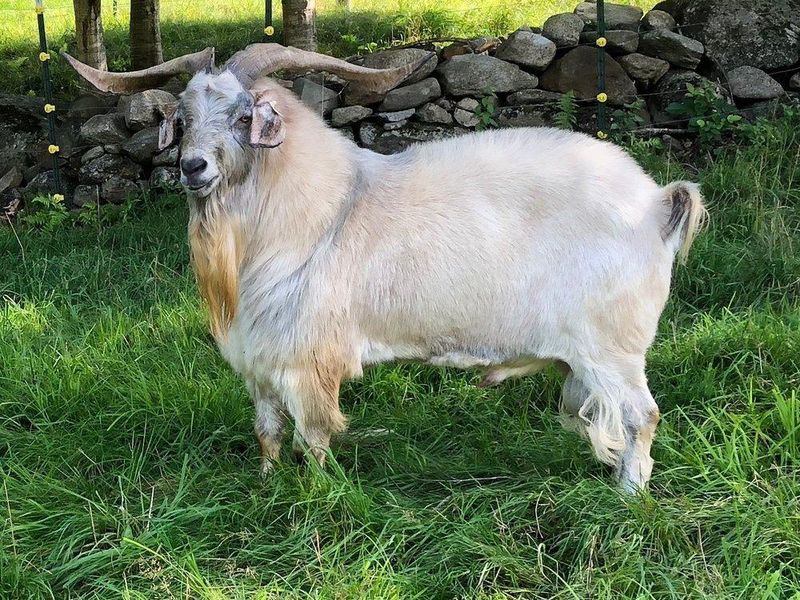
Kiko goats, originating from New Zealand, are known for their hardiness and rapid growth. Bred for meat production, they thrive in challenging environments without much intervention.
Their robust nature makes them ideal for low-maintenance farming. With a variety of coat colors, they are as diverse in appearance as they are resilient.
Fun fact: The name “Kiko” means “meat” in Maori, highlighting their primary purpose in farming.
Toggenburg Goat

Toggenburg goats, with their rich history, are one of the oldest dairy breeds. Originating from Switzerland, they are easily recognized by their distinct facial stripes.
These goats are not only prolific milk producers; they have a gentle and inquisitive nature. Their adaptability to cold climates makes them a favorite in mountainous regions.
Did you know? Toggenburgs were one of the first officially registered goat breeds, dating back to the 1800s.
Nubian Goat
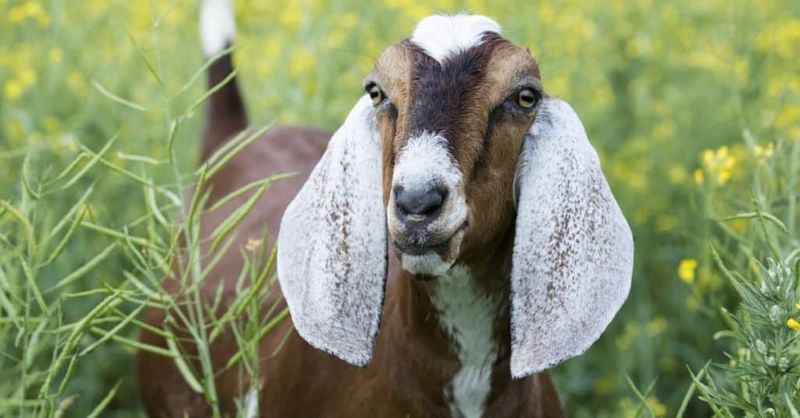
Nubian goats, with their long, droopy ears, are as charming as they are productive. Known for high butterfat content in their milk, they are a dairy farmer’s delight.
Their origins trace back to Africa, and their adaptability to hot climates is noteworthy. With a variety of coat colors, each Nubian is a unique spectacle.
Fun fact: Nubians can produce milk with butterfat content as high as 5%, making it ideal for cheese production.
Kinder Goat
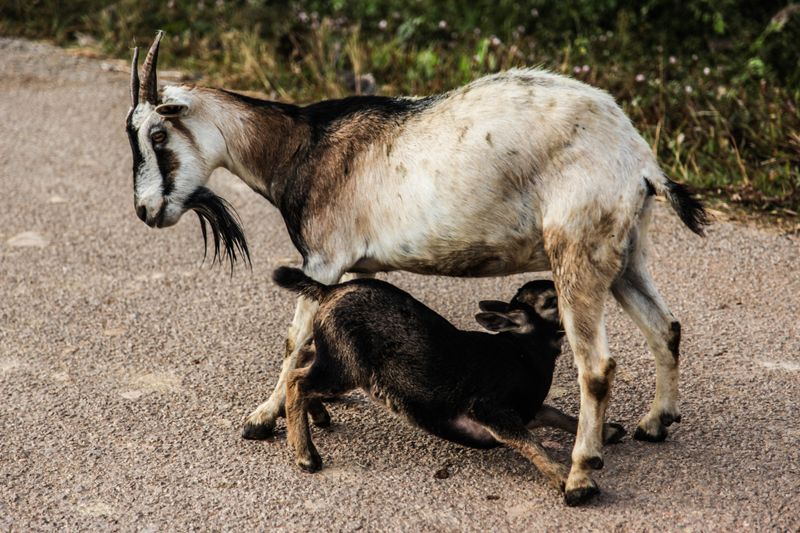
Kinder goats are a delightful dual-purpose breed, developed in the United States by crossing Nubian and Pygmy goats. Known for both milk and meat, their versatility is unmatched.
These goats are friendly, easy to handle, and have a unique charm. Their high milk yield and compact size make them ideal for small farms.
Did you know? Kinder goats were first bred in the 1980s, making them one of the more recent additions to the goat world.
Anglo-Nubian Goat
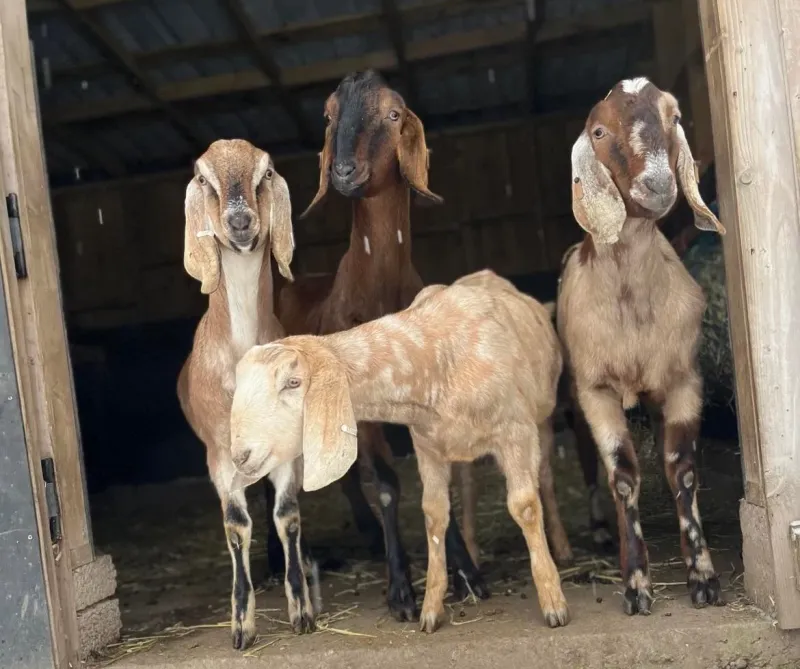
Anglo-Nubian goats, a blend of British and African breeds, are known for their distinctive appearance and high milk quality. Their long ears and Roman noses set them apart.
These goats are not only beautiful; they have a friendly and sociable nature. Their milk, rich in butterfat, is perfect for making creamy cheeses.
Fun fact: Anglo-Nubians can adapt to both temperate and tropical climates, making them a versatile choice for farmers.
Myotonic (Fainting) Goat
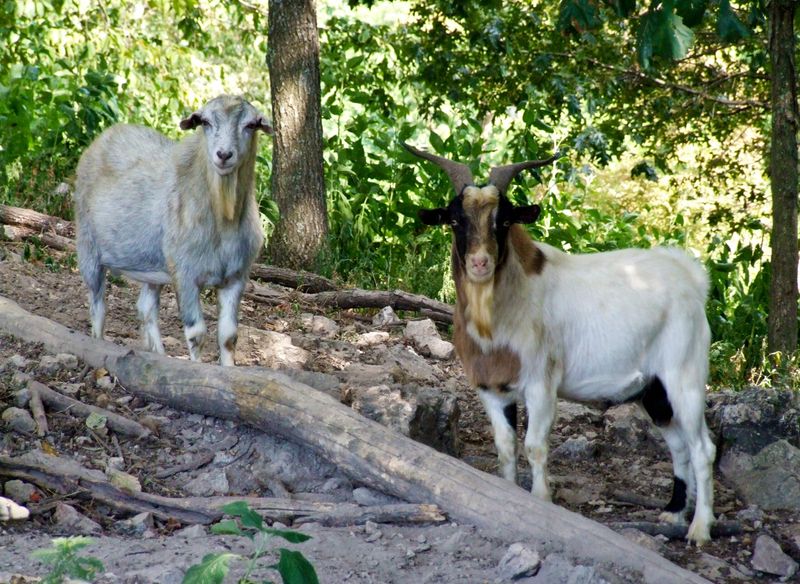
Myotonic goats, often called “fainting goats,” have a unique condition causing them to stiffen when startled. Despite this, they are resilient and hardy animals.
Originally from Tennessee, they are bred for meat and known for their gentle disposition. Their muscular build and unusual trait make them fascinating to observe.
Did you know? The “fainting” condition is due to a genetic mutation, which doesn’t harm the goats but adds to their charm.
Spanish Goat
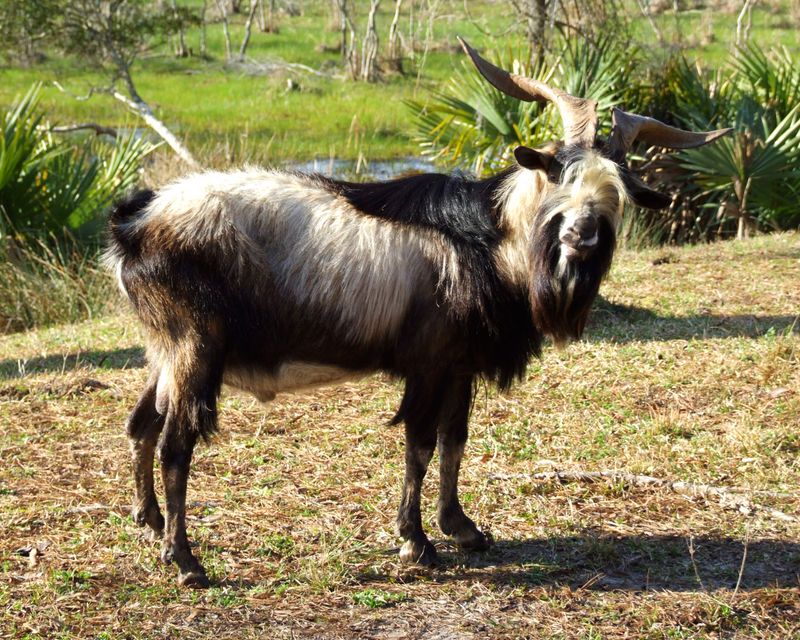
Spanish goats, brought to America by early explorers, are known for their versatility and hardiness. These goats are used for both meat and vegetation control.
Their adaptability to various climates and terrains makes them a farmer’s ally. With large, distinctive horns, they present a striking appearance.
Fun fact: Spanish goats have been integral in maintaining biodiversity by managing brush and invasive plant species.
Cashmere Goat
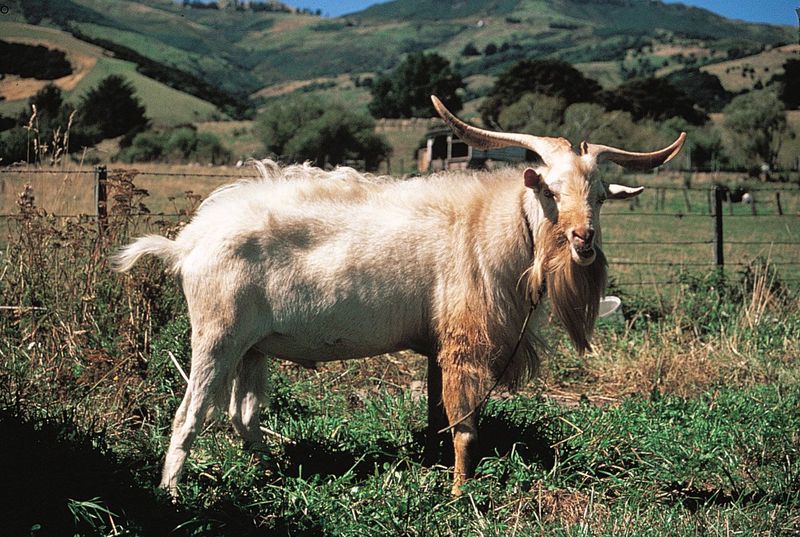
Cashmere goats are prized for their soft, luxurious fiber, known as cashmere. Originating from the Himalayan region, they have adapted well to cold climates.
These goats are not just about fiber production; they are known for their resilience and calm nature. Their thick coats provide insulation, protecting them in harsh winters.
Did you know? Producing cashmere is labor-intensive, making it one of the most expensive natural fibers in the world.
Golden Guernsey Goat

Imagine a goat that glows like the setting sun. The Golden Guernsey, with its lustrous golden coat, is a visual delight. Originating from the Channel Islands, this breed is as rare as it is beautiful.
These goats are known for their quiet and gentle nature, making them a wonderful addition to family farms. Their ease of handling is complemented by their surprising milk productivity, rich in butterfat.
Golden Guernseys thrive in various environments, showcasing their adaptability. Did you know? Their milk is often used to make delicious cheeses and creamy yogurts.
Valais Blackneck Goat
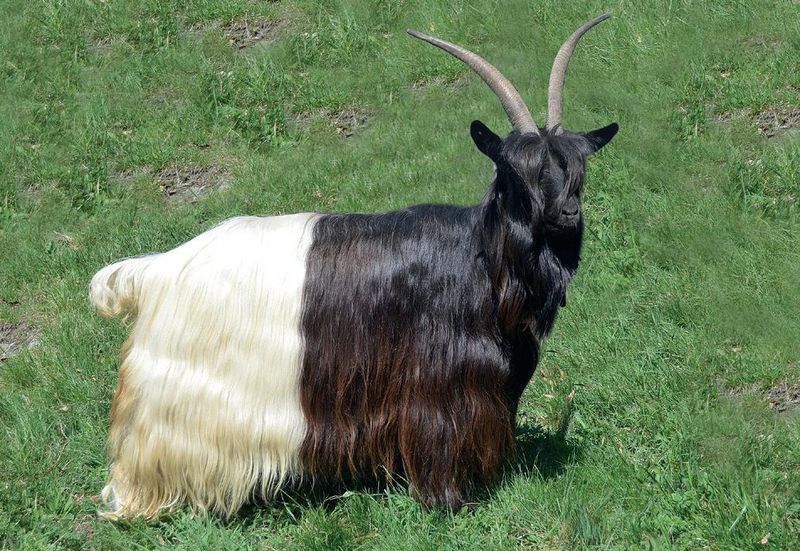
With a coat as striking as a tuxedo, the Valais Blackneck goat commands attention wherever it goes. This Swiss breed is easily recognized by its stark black and white coloring.
Known for their spirited personality, these goats bring a lively energy to any pasture. Their robust nature allows them to navigate mountainous terrains with ease, a testament to their Swiss heritage.
An intriguing aspect of the Valais Blackneck is their long, flowing hair, which adds to their majestic appearance. They are not just eye-catching but also contribute to local cheese production.

